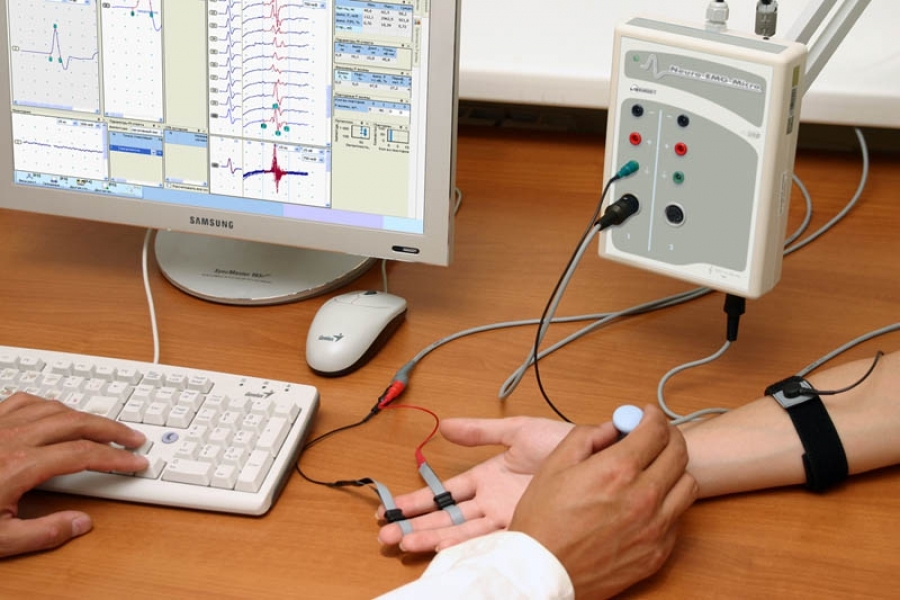Causes of a nervous tic

The nervous tic is an involuntary rhythmic twitching of certain muscle tissues, as well as groups of individual muscles in the neck and head region. The causes of a nervous tic can be quite diverse. Very often the development of a tick occurs in connection with a particular mental experience or in the case of prolonged mental stress. In more rare cases, a nervous tic is a consequence of toxic or infectious damage to the peripheral nervous system. The nervous tic in children can arise in connection with the desire to imitate some actions of adult people - for example, wrinkle the forehead, frown, blink, roll up your eyes, raise eyebrows, lick, etc.
What causes the disease?
Treatment is most often possible in the case of nerve ticks, so-called. Of psychogenic origin. Ticks that have formed due to some organic process, are lost by themselves as a result of the completion of this process in connection with recovery. Nervous tics are fast repetitive stereotyped abrupt, but involuntary, irregular movements that most often involve a particular group of muscle tissue. The patient has the opportunity to suppress a tick with a strong-willed effort for a specific time, but often this can be achieved due to the rapidly increasing internal stress, inevitably interrupted, while inducing a short tick-like "storm".
Nerve ticks can be preceded by a feeling of an intolerable need for movement, which creates the illusion that tick is arbitrary. The emergence of adult nerve tics in adults increases in the case of agitation or relaxation, but decreases in the case of distraction or, on the contrary, in the case of focusing on specific activities. Most often, tics tend to occur in severely marked parts of the body in a particular patient. Any patient has his own repertoire of nervous tics, which changes with time.
Classification and causes of tick.
In medicine there is its own classification of nerve tics, it is usually inclined to distinguish vocal and motor, complex and simple nervous tics. As examples of motor simple ticks, you can consider jerking your head, blinking, shrugging your shoulders, squeezing, drawing in your belly, you can see bouncing, hitting your own body, repeating previously seen gestures( or echopraxia), various vulgar gestures( or copropricia).
Simple vocal nerve ticks include snorting, coughing, whistling, grunting, complex nervous tics include repetition of only recently heard words( also called echolalia), involuntary screaming of some obscene abusive language( or coprolathy).In the case of proliferation, nerve tics are multiple( multifocal), local( most often in the neck, face, shoulder girdle) or generalized.
Consider the reasons for the occurrence of ticks. It is customary to select primary as well as secondary tics. Primary tics are usually formed in the absence of a different disease and are often in the childhood, as well as the adolescent period due to disruption of the maturation of motion control systems. In the event that the disturbances do not disappear for a long time, the nervous tics also remain in adulthood. The origin of nervous tics is primarily associated with hereditary factors.
The group of primary tics that are formed in the absence of a specific primary disease are divided into:
- motor transient and / or nerve tics that can last less than one year;
- motor chronic or vocal nerve tics that persist without prolonged remissions for one year or more;
- Tourette syndrome, which is a combination of chronic vocal and motor nerve tics;
Secondary nerve tics often occur at different ages.
Causes of a nerve disease or a tick that is prone to repetition can be in:
- brain damage by medication( neuroleptics, anti-convulsants, etc.);
- encephalitis;
- craniocerebral injury, trauma;
- poisoning with carbon monoxide;
- vascular diseases of the brain( atherosclerosis, strokes);
- diseases of the psyche( schizophrenia, autism).
In children, tics usually appear at the age of 5-15 years, but in a quarter of situations, pronounced nervous tics remain throughout life. Boys suffer from ticks 2-3 times more often, in comparison with girls. Mainly formed on the face of point tics( blinking, frequent flashing, sniffing), and then slowly go down and acquire a generalized character, alternately involving the cervical, brachial muscles, as well as muscle tissue of the lower and upper limbs and trunk.
With the passage of time, the complexity of hyperkinesis increases; simple complex ticks include motor complex, rarely vocal, complex nerve ticks, for example, coprolalia. In the future, wave-like course with intervals of weakening and intensification of hyperkinesis is characteristic, occasionally with prolonged remissions. Severity of nervous tics reaches a maximum in the pubertal period, and then decreases in young and adolescent age. If we talk about the emergence of nerve ticks in adults, then in the fourth part of the situation, tics are lost, in half of the cases - significantly reduced. Only in the fourth part of the situation, the expressed tics remain throughout life, but in this situation they, more often than not, do not cause disability of the patient.
Treatment of nervous tics in adults in the long run is not about suppression, but the formation of conditions for the normal course of life and the upbringing of control over one's actions. In most situations, there is no need for medication. To suppress tics, use neuroleptics, nootropic drugs or light stimulants in individually selected doses. At each stage of the disease, methods of psychotherapy are important.



